The method of lower jaw braces is currently attracting a lot of attention due to its high effectiveness in correcting imperfections and its cost-effectiveness. However, is it really effective to only brace the lower jaw? What are the Current Methods for Lower Jaw Bracing? To answer this question, the following information in this article will help customers find the answer.
When should you consider wearing Lower Jaw Braces?
To achieve optimal results in correcting misaligned teeth and bite issues, dentists usually place braces on both jaws simultaneously. This is necessary because bracing only one jaw can lead to imbalance in the bite, causing unevenness in the jaw structure.
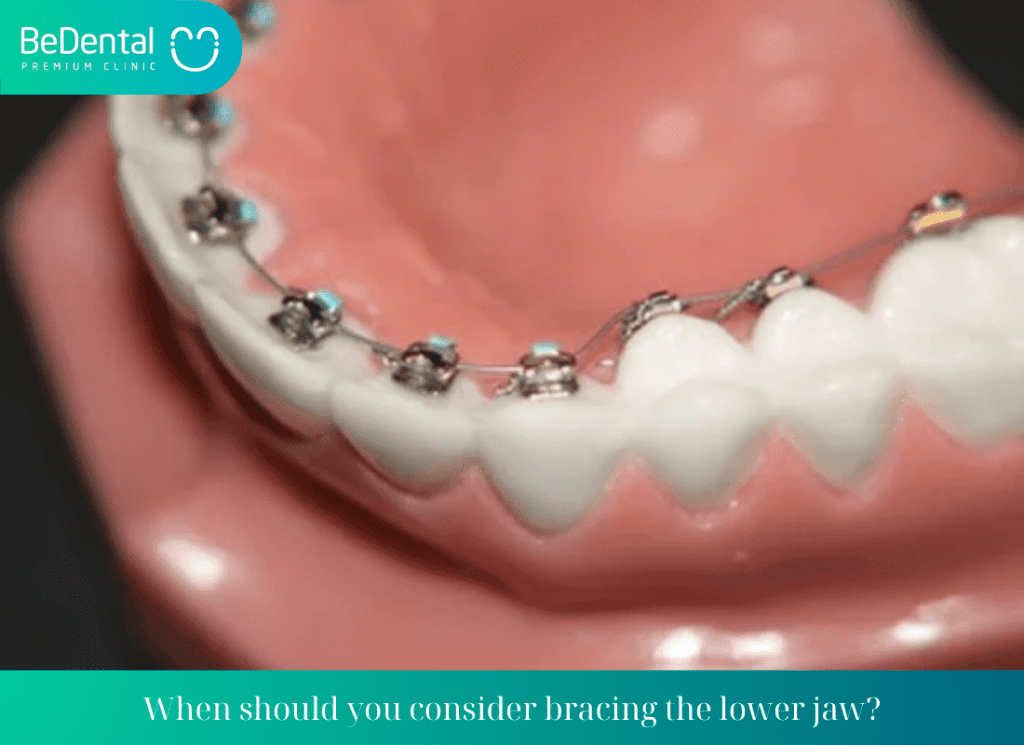
However, if the upper jaw is already properly aligned, the dental arch fits well, and the upper and lower jaws are balanced, then bracing only the lower jaw can still achieve high effectiveness. This means that adjustments to the lower jaw can be made after the upper jaw has achieved the standard ratio for both teeth and bite.
Is bracing the upper jaw different from bracing the lower jaw?
Dentists specializing in orthodontics indicate that treating the upper jaw is generally more complex than treating the lower jaw. This is because the lower jaw is easier to observe, allowing the dentist to perform tasks such as attaching brackets, adjusting the force on the teeth, and fine-tuning the elastic bands more easily. Particularly, when expanding the jawbone is required, the process is much more manageable with the lower jaw.
See more: Will Braces Cause Protrusion Again? Causes and Solutions
Whether you are bracing the lower or upper jaw, the results largely depend on the expertise of the dental team. The dentist is responsible for calculating and creating an orthodontic plan tailored to each individual’s dental condition.
Therefore, when considering braces, it is essential to choose a reputable dental clinic with skilled orthodontists and standard procedures to achieve optimal results and save time during the treatment.
Is bracing only the lower jaw effective?
Bracing is a popular orthodontic technique used for various issues such as misaligned teeth, overbite, underbite, protruding teeth, gaps, and more. This technique uses aesthetic dental tools that are either fixed or removable on the tooth surface to create consistent pulling forces that gradually move the teeth into the desired position on the dental arch. Right after treatment, you will have a well-aligned and aesthetically pleasing smile with improved chewing function.
Currently, bracing the lower jaw is a method chosen by many patients. Partly to save costs and time, and partly because their upper jaw is already well-aligned.
However, according to orthodontists and specialists, this method is only recommended for cases where the patient has issues with teeth misalignment in one jaw, and the other jaw is already properly aligned without any shape or bite discrepancies
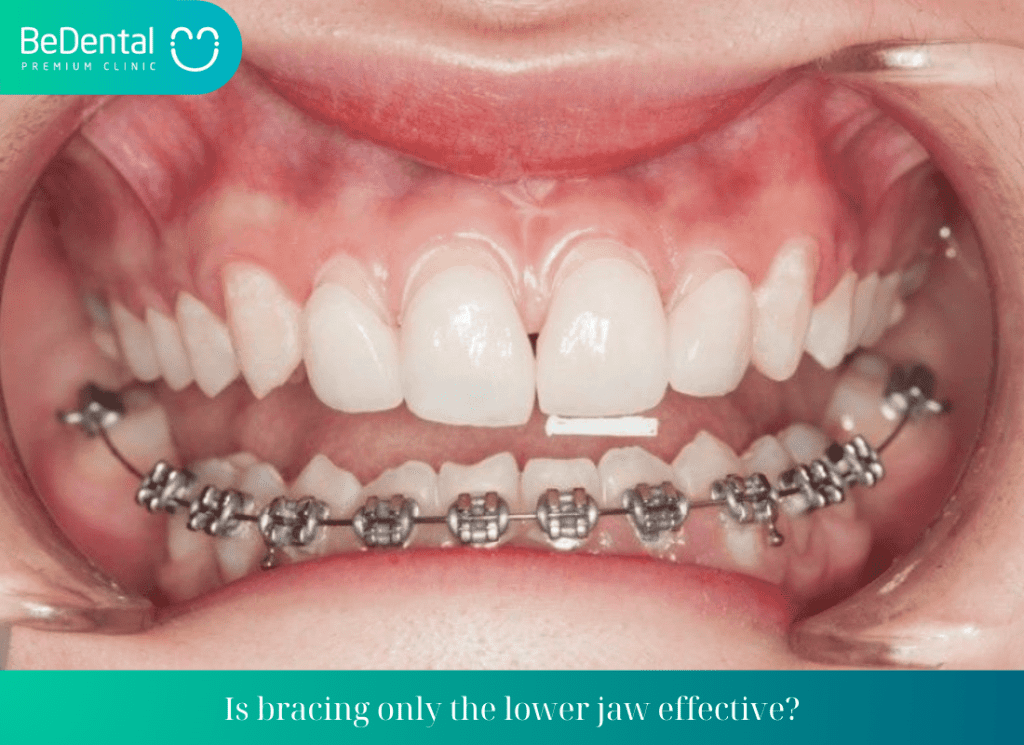
On the other hand, in cases of severe tooth misalignment, narrow jawbones, and when patients want to correct imperfections as quickly as possible, bracing both jaws is the optimal solution because:
- Orthodontic treatment on one jaw alone can lead to misalignment between the upper and lower jaws, resulting in a loss of balance and negatively affecting the aesthetics of the face.
- Misaligned bite, where the jaws do not match, can make chewing difficult and even unpleasant.
Current Methods for Lower Jaw Bracing
With the advancement of dental technology, several methods for bracing the lower jaw have emerged. Notable methods include:
Metal Braces
Metal braces are a traditional orthodontic solution used to correct misaligned teeth, gaps, overbite, protruding teeth, and other issues by bringing them into proper alignment on the dental arch. This method uses forces applied through orthodontic tools combined with a sturdy metal bracket framework, ensuring effectiveness and safety in the teeth adjustment process
See more: Bone resorption when wearing braces
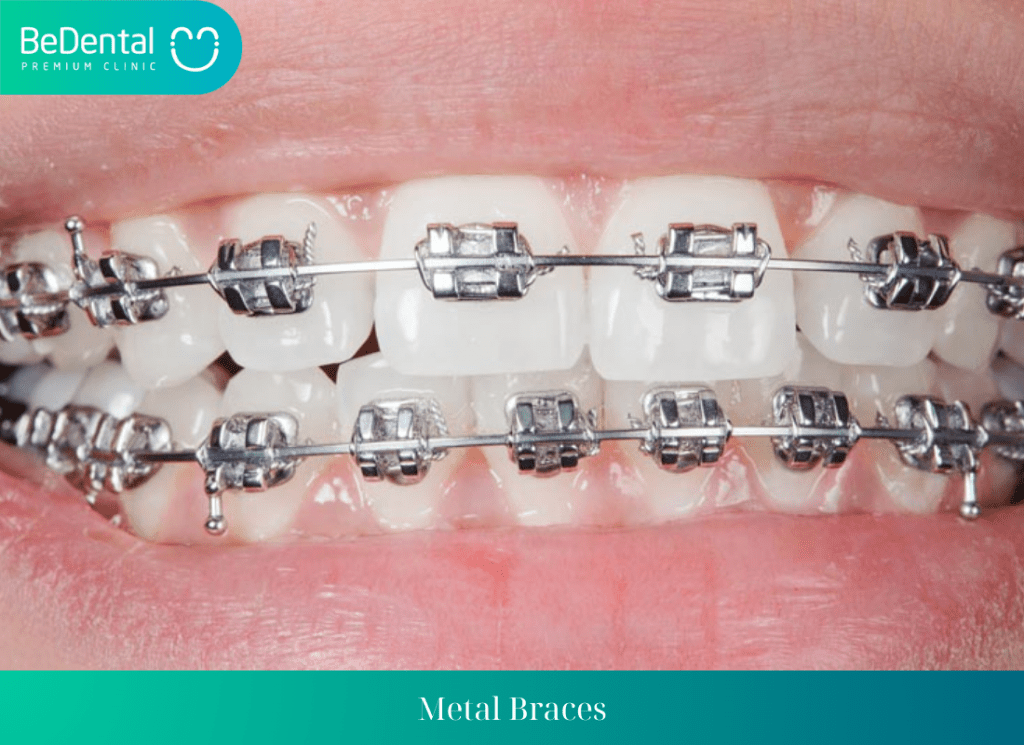
By applying force from orthodontic tools to the teeth, metal braces create a stable pulling force that gradually moves the teeth into the desired position. The metal bracket framework provides rigidity and stability, keeping the teeth from shifting back after adjustment.
Metal braces are highly effective and widely used in orthodontics. This method has been proven and is reliable in improving misaligned teeth and achieving a straight, beautiful smile.
Lingual Braces
Lingual braces are another popular method for lower jaw bracing. They are favored because the brackets are attached to the inner surface of the teeth rather than the outer surface as in traditional methods. This ensures better aesthetics, as the braces are not visible on the outside.
See more: Things to know when wearing braces
However, it is important to note that the adjustment period may be longer compared to traditional techniques. Bracing the lower jaw requires time and patience, as the lower teeth often move more slowly than the upper teeth. The process can take from several months to a few years, depending on the initial dental condition and the individual’s orthodontic goals.
Ceramic Braces
Ceramic braces are a dental technique that uses brackets made of high-aesthetic ceramic material and clear wires to apply force, helping to align the teeth to the desired position. The structure and mechanism of ceramic braces are similar to metal braces, but the brackets are made of pure ceramic, which matches the color of natural teeth and provides a high level of aesthetics during the treatment
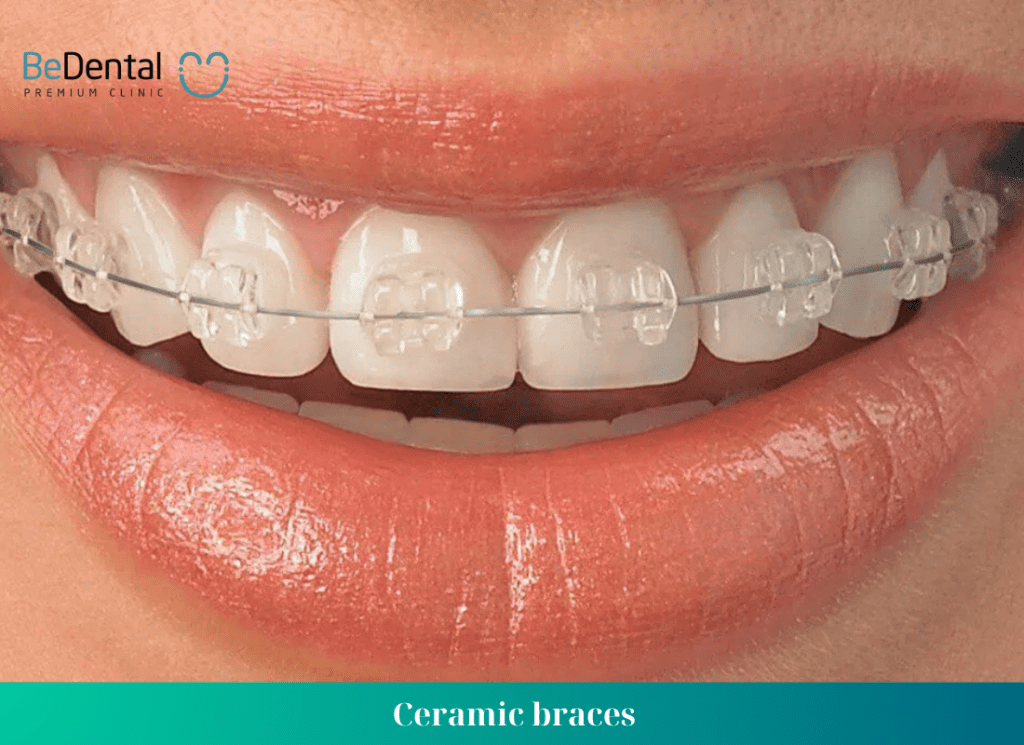
The use of ceramic braces in orthodontic treatment offers several aesthetic benefits. With ceramic brackets, braces become less noticeable as they match the color of natural teeth. This helps individuals feel more confident and less self-conscious while laughing, speaking, or interacting during the adjustment period.
Not only do ceramic braces improve aesthetics, but they also ensure effective teeth alignment. The clear wires combined with ceramic brackets create a stable force to gradually move the teeth into the correct position.
See more: Braces or Ceramic Veneers: Pros and cons
The adjustment process with ceramic braces usually lasts from a few months to a few years, depending on the initial dental condition and the individual’s orthodontic goals.
Clear Aligners
Clear aligners are currently one of the most popular orthodontic methods. Instead of using traditional brackets, this method employs transparent trays that help maintain the aesthetic appeal of the teeth throughout the treatment.
The clear aligners cover the teeth subtly and are hard to notice, allowing individuals to feel more confident while communicating and smiling. Especially since they are transparent, the aligners do not significantly affect the overall appearance of the face.
However, clear aligners typically have a higher cost compared to other types of braces. This is due to the specialized technology and materials required for designing, manufacturing, and customizing the transparent trays. Choosing the right orthodontic method should be based on the condition of the teeth and the individual’s financial capability.
See more: What Is the Appropriate Age for Braces?
How Long Does Lower Jaw Bracing Take?
How Long Does Lower Jaw Bracing Take? The duration of lower jaw bracing typically depends on the individual case and the adjustment stages. It is influenced by various factors such as age, current dental condition, and the orthodontic method used. According to dental experts, if the bracing is performed correctly, the duration for lower jaw bracing usually ranges from 2 to 3 years.
However, the time required for braces can vary for each person due to the many influencing factors
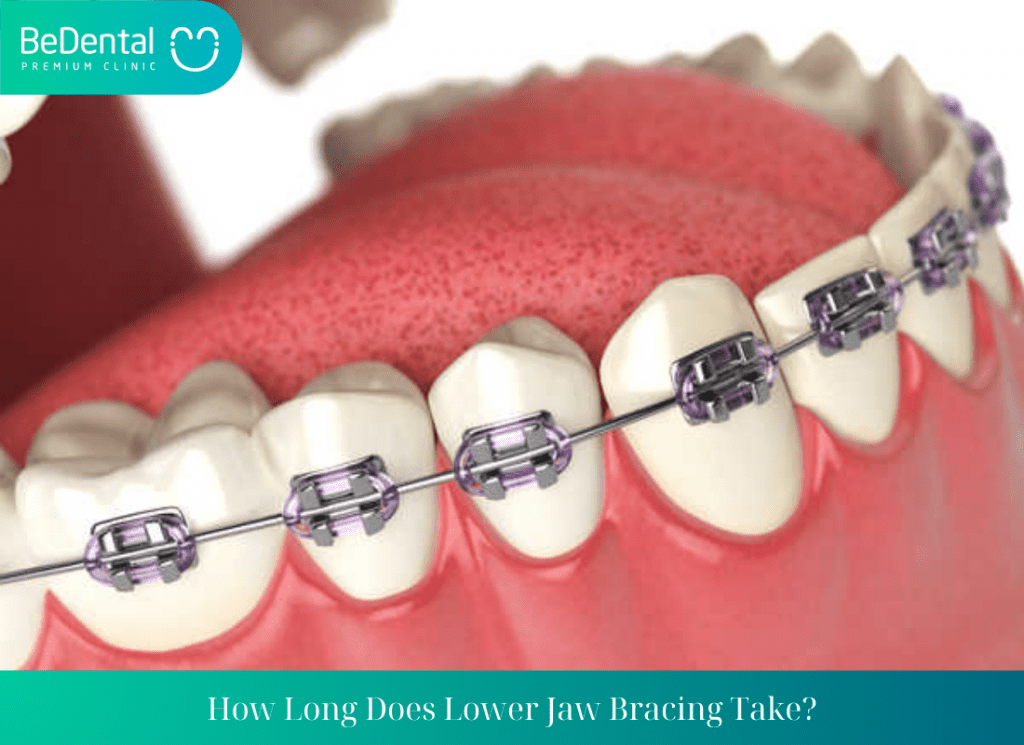
Initial Dental Condition
In cases of severe misalignment, underbite, or significant structural issues, the treatment time may be longer compared to milder cases. More serious problems require additional time and effort to align the teeth properly. Complex treatment steps, such as performing supplementary dental procedures, adjusting bone structure, or using surgical methods, may extend the treatment duration.
See more: What is Orthodontic archwire?
Additionally, the time required for braces also depends on the age of the patient. For adults, orthodontic treatment usually takes longer than for children. This is related to the development of bones and tissues during adulthood. Adults have stronger and less flexible bones, requiring more time to move the teeth into the desired positions.
Orthodontic Method
Metal braces generally work faster compared to modern orthodontic options like lingual braces or Invisalign aligners.
Treatment Plan
The duration of lower jaw bracing also depends on the health of the gums and jawbone. In some cases, preparatory steps are needed before starting braces to ensure effective treatment.
These steps may include examining and treating any issues related to gum health and jawbone condition. Proper preparation before the bracing process creates better conditions for future teeth alignment.
See more: Signs of gum recession during braces
Therefore, to answer the question about how long lower jaw bracing will take, it is essential to discuss with a specialist to evaluate the specific dental condition and determine the appropriate treatment plan.
The dentist will conduct an initial examination to assess your gum health, jawbone condition, and dental status. Based on these results, the dentist will provide a personalized treatment plan and offer information about the expected duration and influencing factors in your orthodontic journey
Tư vấn chuyên môn bài viết:
BÁC SĨ DƯƠNG THỊ THÙY NGA





